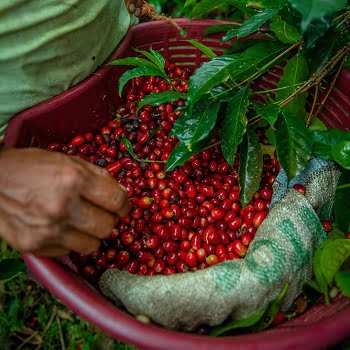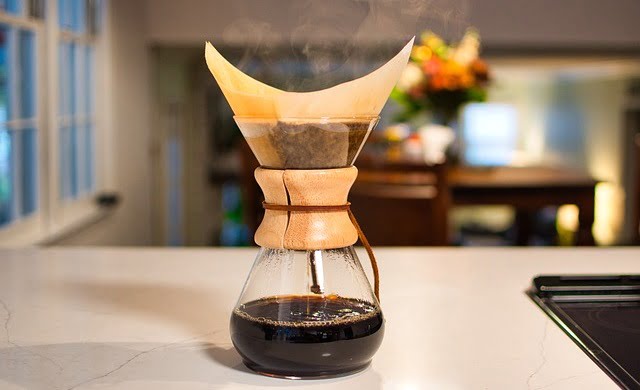As a dedicated coffee enthusiast and experienced barista, I regularly try various exotic brews.
But even I balked when handed a $120 bill for a single cup of coffee – Panamanian Geisha to be exact! Believe it or not, some third-wave cafes actually charge over $100 per serving for this exclusive bean.
Why pay so much for glorified Joe? Well in this article, I’ll break down exactly what makes Geisha coffee uniquely special and the factors contributing to its exclusivity.

What is Geisha Coffee?
Geisha is a sub-variety of Arabica Coffee known for its exceptional taste. Originally cultivated in Ethiopia, this coffee cultivar has since spread to different regions worldwide, finding its perfect expression in the Panamanian highlands.
The Geisha coffee trees grow tall and have elongated leaves. They produce oval beans and are best suited for high-altitude regions with nutrient-rich volcanic soil.
These Geisha coffee trees produce elongated beans inside the coffee cherry fruit. The beans have been described as almost peaberry-shaped, yet more aromatic.
Geisha coffee is renowned for its unique and extraordinary flavor profile that is unmatched by any other coffee.
Its delicate floral, jasmine and peach-like aromas, coupled with complex citrus and fruity notes, make it an experience that should not be missed!
Geisha variety is exceptionally rare and unique which demands specific ecological conditions to thrive. Only a few regions in Panama, Costa Rica, and Colombia can match its needs.
Even in the right conditions, the harvest is minimal, with only a few pounds per tree annually!

History of Geisha Coffee
Geisha coffee was discovered in Ethiopia in the 1930s, where different varieties of Arabica coffee plants grew naturally. But, the coffee’s rise to stardom happened in Panama.
It is believed that a natural cross-pollination occurred between Arabica and Robusta coffee plants, resulting in a unique hybrid varietal called Geisha.
After it was discovered that the variety had resistance to coffee leaf rust disease, it was distributed across Central American countries in the 1960s.
However, it wasn’t widely adopted by farmers as the branches of trees were brittle
In 2005, Geisha Coffee from Boquete, Panama won the Best Panama Coffee award and sold for an extraordinary $20 per pound! Its exquisite notes gained worldwide recognition and became a sensation in the coffee industry.
Is it Gesha or Geisha?
Both “Geisha” and “Gesha” refer to the same variety of Arabica coffee. It is named after the “Gesha village” in southwest Ethiopia where this rare coffee species emerged. So the proper spelling is Gesha, not Geisha.
When these plants were eventually introduced to Latin America, the name was spelled mistakenly as “Geisha” by producers there.
Although the alternative spelling is still widely used today, it is more accurate to use “Gesha” to honor the coffee’s origin and heritage in Ethiopia.

Why is Geisha coffee so expensive?
Geisha needs a very specific and unusual set of growing conditions only found in a few remote regions of Panama. The steep hillsides, volcanic soil makeup, elevation levels, rainfall, and diffused sunlight all impact the beans’ distinct floral tastes.
The tricky Geisha plant also grows slowly and is vulnerable to fungus and disease, making production costs and risks high for small farms.
Additionally, once the delicate Geisha beans were discovered by award-winning baristas, the unbelievable flavors created incredible hype and demand.
Top specialty roasters and cafes compete to buy, serve, and showcase Panamanian Geisha each year. Yet supply hits the market in very limited quantities totaling just a few thousand pounds annually.
In auctions, Panamanian Geisha from renowned farms like Hacienda La Esmeralda have set record-breaking prices in 2019, exceeding $1000 per pound. Other farms like Elida Estate or Lamastus Family Estates have achieved prices ranging from $100 to $200 per pound.
Today, Geisha is grown in more than 12 countries but no other country competes with the speciality exhibited by Panamanian Geisha.
Geisha from regions like Costa Rica or Guatemala is not that expensive and is priced at around $50-75 per pound (Still double that of a normal coffee!)
What does Geisha coffee taste like?
Geisha Coffee delivers a crispy clean and floral cup. It is renowned for its floral and peach-like aromatics, and carries notes reminiscent of jasmine or bergamot, lending it an exquisite and fragrant quality. When you first take a sip, you can taste fresh notes of mango, peach, and raspberry.
The tasting notes that expert cuppers identify in top-quality Geisha are incredibly diverse and dynamic.
There is a unique natural sweetness in Geisha coffee that is unmatched by any other coffee variety.
Panamanian Geisha Coffee has achieved an astounding 93 cupping score from the Specialty Coffee Association.
Meanwhile, Geisha coffees from other origins like Costa Rica or Colombia also score in the 83+ range frequently.
Although Geisha from other regions may not have smashed records like Panama’s, they still exhibit excellent intensity, a clean cup, and distinct attributes.
I was able to try a delicious Costa Rican Geisha from La Candelilla Farm last season. This light roasted Geisha packed a flavor punch – the cup was bursting with sweet apple and floral hints upfront, trailed by zesty citrus tones.
How to Make Geisha Coffee?
Slow manual pour-over or drip methods are perfect for brewing Geisha coffee as these methods truly allow you to appreciate the complex flavors of this rare variety the most.
Making Geisha coffee into espresso is basically wasting those expensive complex beans, as the quick high-pressure extraction can’t fully capture the delicate notes.
I’d avoid adding milk, cream, or sweeteners too – they’ll only mask the succulent fruit and nectar qualities that make Geisha so special.
Savor that pure black cup solo to fully experience the crisp, juicy tropical tones dancing across your palate.

Different varieties of Geisha Coffee
Though Panamanian Geisha Coffee has made it to the limelight in previous years it is also grown in many different regions in the World and exhibits unique flavor profiles.
Costa Rican Geisha Coffee
Costa Rican Geisha coffee comes from La Candelilla Farm. It has 30% less caffeine compared to regular Arabica beans and offers some sweet floral and apple tones, plus a clean zesty finish.
They are processed naturally under the sun and hand-selected by farmers to refine the coffee’s distinct succulent flavors.
Guatemala Geisha Coffee
Geisha coffee is grown at 5,000 feet above sea level in the San Marcos region of Guatemala. The coffee is floral, sweet, and citrusy in flavor.
For these rare Gesha beans, farmers employ wet processing and let the beans ferment for two days before drying.
This draws out Geisha’s signature jasmine and lime notes with a smooth sweetness and fruity flavors.
Panamian Geisha Coffee (The Best)
Panama is world-renowned for producing the most exceptional Geisha coffee. While there are a handful of farms cultivating the rare Gesha strain, two historic plantations stand above the rest – Hacienda La Esmeralda and Lamastus Estates.
What sets these states apart is their mastery of innovative processing techniques and specialist roasting customized for Geisha’s delicacy.
Is Geisha Coffee worth it?
If you ever get the chance to try a perfectly prepared cup of floral, fruity Geisha, be sure to savor every last sip of the experience! The unique hybrid Geisha coffee plant produces a truly one-of-a-kind tasting brew.
Authentic Panamanian Geisha Coffee is undoubtedly a treasure for those with a passion for the complexities of coffee and deep pockets to afford it.
However, with the surge in public fascination over Geisha coffee, there has been an unfortunate rise in “fake” Geishas flooding the market too.
Some disreputable coffee sellers or mills take other varieties of Arabica beans and inaccurately market them as the prestigious Gesha variety to fetch higher profits.
So buyers need to beware – real Panamanian Geisha from acclaimed growers like Hacienda La Esmeralda sells for around $1000+ per pound! While you can buy delicious Geisha coffee from other regions at lower prices, it will still be much more expensive compared to normal Arabica coffee.
Final Thoughts
And there you have it, friends – the inside scoop on those exclusive Geisha beans. I don’t know about you, but I’m feeling tempted to sell a kidney just to try a real Hacienda La Esmeralda cup!
Drop your thoughts on pricey Geisha below! Would you actually pay $100 for a perfect cup highlighting floral panoramas dancing with juicy fruit notes? Or would you rather spend that cash on 100 cups of Joe from normal Arabica beans?
Discover exciting articles related to exclusive coffee beans:
- What is Bourbon Coffee
- What is Typica Coffee
- SL 28 and SL 34 Coffee
- What is Pacamara Coffee
- What is Maragogipe Coffee
- Kopi Luwak Coffee
FAQs
Does Geisha coffee have more caffeine?
No, Geisha coffee actually contains less caffeine compared to most other coffee varieties.
Geisha is not known for its intense taste and higher caffeine content instead it is popular for fruity and complex taste.
Is Geisha Coffee produced in Japan?
No, Geisha coffee is not produced in Japan. The name’s resemblance to the “Japanese Geisha” which are popular artisans in Japan causes some misunderstanding.
The term actually refers to the Gesha village in Ethiopia where varietal was first discovered.





